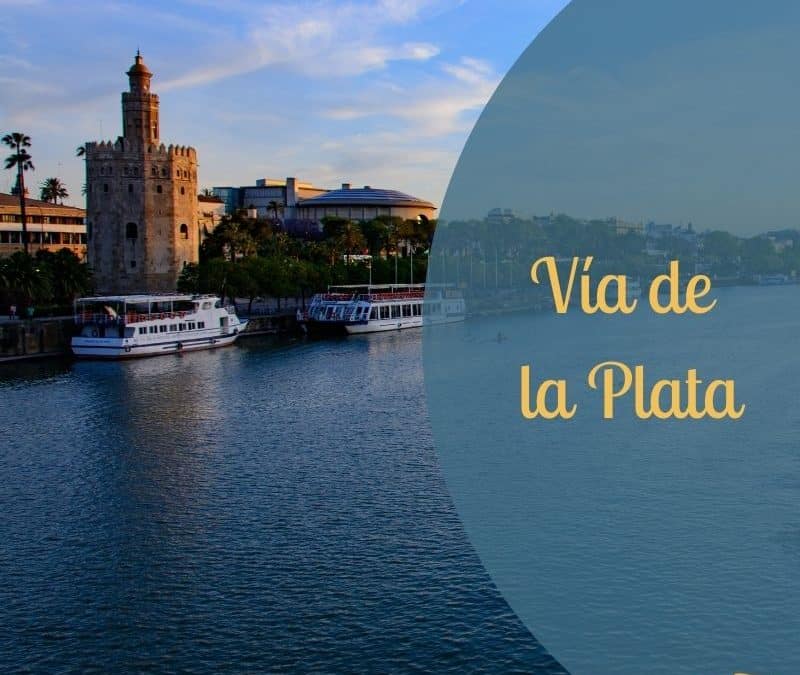The Vía de la Plata crosses Spain from south to north, making it one of the longest Caminos in Spain. It starts in Sevilla, in the region of Andalucía and continues through Extremadura and Castilla y León, before entering Galicia.
The distance covered is around 1000 km, depending a bit on the variant you take. You have two options:
- You can walk up to Astorga and then join the Camino Francés for the final stages (260 km).
- Or you can head towards Galicia before you reach Astorga, through the Camino Sanabrés. Granja de Moreruela (in Zamora) is the town where you must decide which way to continue.
The Vía de la Plata is not a difficult route in terms of terrain and elevations, but you will be facing other challenges such as the weather. It is not advisable to walk it during the months of julio (July) and agosto (August) due to the extreme heat. You should still be careful in junio (June) and septiembre (September). The best months would be marzo, abril, mayo (May) and octubre (October).
The distances between towns are long and the services are few, so you need to be prepared and make sure you have enough agua and snacks to make it to the next town. It might be hard if you are planning to do shorter stages.
The signage is not as abundant as in other Caminos but it’s adequate. The Vía de la Plata follows old Roman roads, so you will also see many Roman milestones
I think I’m not making it sound very attractive, but that’s not true. It’s just not the Camino Francés, so you should adjust your expectations and be prepared. It is a much lonelier Camino (only 3.04% of pilgrims chose this route in 2017 according to the Pilgrims office statistics)* and you will be walking a lot through pastures (with lots of cattle). Some of the best cured hams come from this part of the country.
What to see on the Vía de la Plata
But it’s not all cows and pigs. The Vía de la Plata also goes through wonderful cities. In fact, it is the Camino with the highest number of towns on UNESCO’s World Heritage List:
- The cathedral, Alcázar and Archivo de Indias in Sevilla: https://whc.unesco.org/en/list/383
- Mérida, with its Roman amphitheatre, theatre, circus and water-supply system, among other things: https://whc.unesco.org/en/list/664
- The old town of Cáceres: https://whc.unesco.org/en/list/384
- The old city of Salamanca: https://whc.unesco.org/en/list/381
But these are not the only interesting places to see. Zafra, in Extremadura, is a lovely medieval town worth a visit. And Zamora, in Castilla y León, is full of Romanesque arquitecture and also worth a visit.
So, do you think this is the Camino for you?
*Source: https://oficinadelperegrino.com/estadisticas/
Today’s Spanish words
Vía de la Planta
Andalucía
Sevilla
Extremadura
Zafra
Mérida
Cáceres
Salamanca
Zamora
Granja de Moreruela
Mayo
Junio
Julio
Agosto
Septiembre
Octubre
Make sure you don’t miss any posts by subscribing for free here. That way, when a new post is out, you will get it in your inbox. And… you get access to exclusive content too.




We just finished the Portuguese Camino and look forward to another one. This sounds perfect for me!
I’ve been following your Portuguese Camino. Looking forward to the next one!